Special Education In Oklahoma
Warm Water Therapy Changes Lives
Stillwater's Unique Form of Recreational Therapy
By: Saara Hakanen, Zoe Kent-Ferraro, Darby Madden
Featured in The O'Colly Newspaper

By Saara Hakanen, Zoe Kent-Ferraro, Darby Madden
“I’m walking, I’m walking!” A Stillwater elementary school student shouted after being told she would never be able to walk again. This girl got more from warm water therapy than anyone could’ve hoped for.
Life-changing recollections like this are among the favorite memories of Jonette Passmore, instructor for the warm water therapy lab. Passmore’s job is to teach Oklahoma State University’s recreational therapy students to work with local elementary and middle school students, so that they could experience similar moments.

Jonette Passmore instructing her students how to instruct their patients
OSU’s warm water therapy lab is the first of three clinical rotations required for a recreational therapy degree. Each student in the program works with the same patient from Stillwater elementary or middle school throughout the semester.
During their time together in the pool, patients with limiting conditions can gain strength and mobility. Warm water therapy doesn’t add stress to the patients’ bodies since water reduces 90% of their body weight. Although the progress takes time, children who have participated have seen confidence boosted as well as improved muscle strength and flexibility.
“The progress you see from September to December isn’t always a lot but I have worked with some kids for four or five years,” Passmore said. “To be able to look back to when they first came, they cried the whole 30 minutes they were in the water, and now they’re independently doing things.”
However, the children are not the only ones learning groundbreaking life skills. Passmore wants the college students in her recreational therapy class to understand that their patients can teach them even more than vice versa.
“I think you have to go into it realizing that they can teach you something, not that you’re here to teach them,” Passmore said.

Stillwater Medical’s Total Health Fitness Aquatics Center is home to the only warm water therapy program with one-on-one attention from student therapists in the state of Oklahoma. Passmore and her student therapists are in high demand. Public schools’ special education programs evaluate which children they think would benefit the most from warm water therapy.
“They usually have more Stillwater public students that want to come than what we can bring, just because of the shared numbers in the water,” Passmore said.
To accommodate the limited resources, the pool capacity falls to 20 people in the water at once. That makes it possible to fit 10 Stillwater Public School students and 10 OSU students into one session.
Oliver Riggs, 12 years old, is one of the lucky 10 that gets to play and learn in the pool with a familiar OSU student every Thursday. His smile through the 30-minute therapy session is even more overflowing than the pool itself. When this bubbly kid with Down syndrome is asked whether he had fun in the pool, he grins and gives a straight-to-the-point answer: “Yes!”
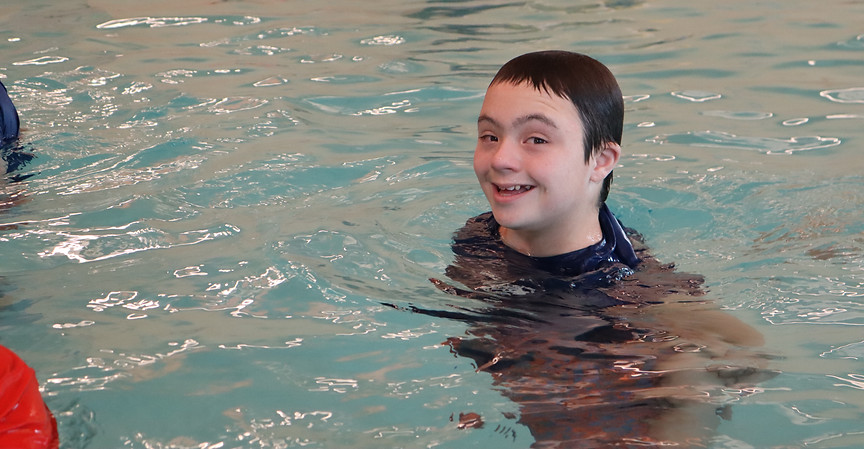
Oliver and his wide smile

Vanessa Lane
Smiles are common inside Total Health Aquatics. The pool and a large gym are a few of the resources that Total Health offers Stillwater residents. Vanessa Lane, Supervisor of Fitness, sees people from all walks of life come together to workout.
“There is one time when a younger super built man and an older female around the age of 65 were working out together, doing spin classes and weightlifting,” Lane said. “This interaction just shows how much of a family we are at Total Health Aquatics, and we want to lift others up with a smile on our faces.”
Fun exercises can also be useful and highly educational. While physically moving around the pool, children learn colors, numbers, letters, sequencing and balance among many other things. According to Passmore, swimming is used as a task in the pool to stimulate all parts of the brain at once.
“That’s what’s great about the water because you can incorporate your left and right brain at the same time with everything you do,” Passmore said.

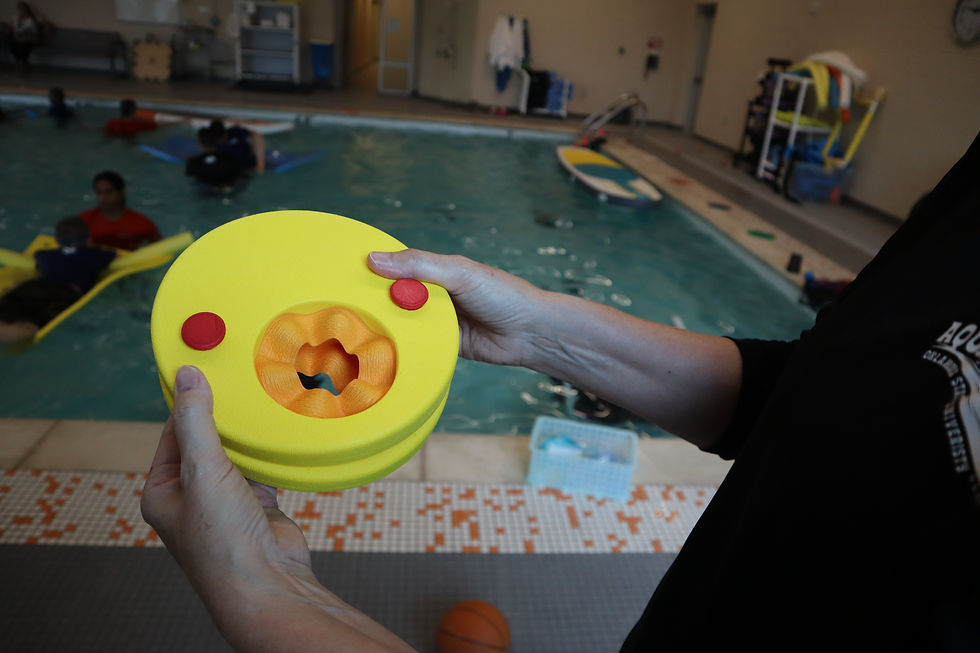
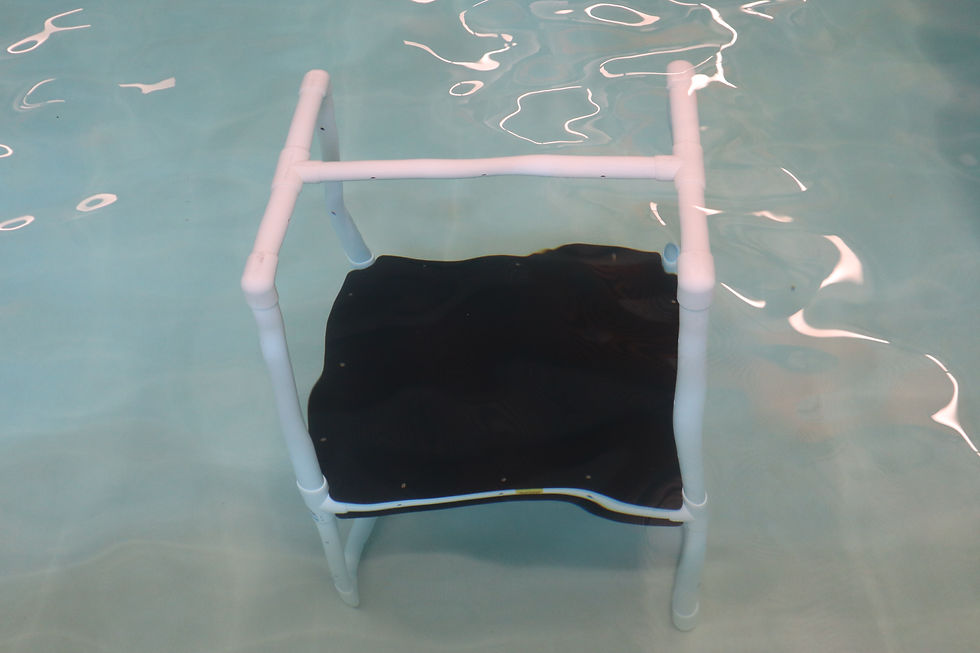
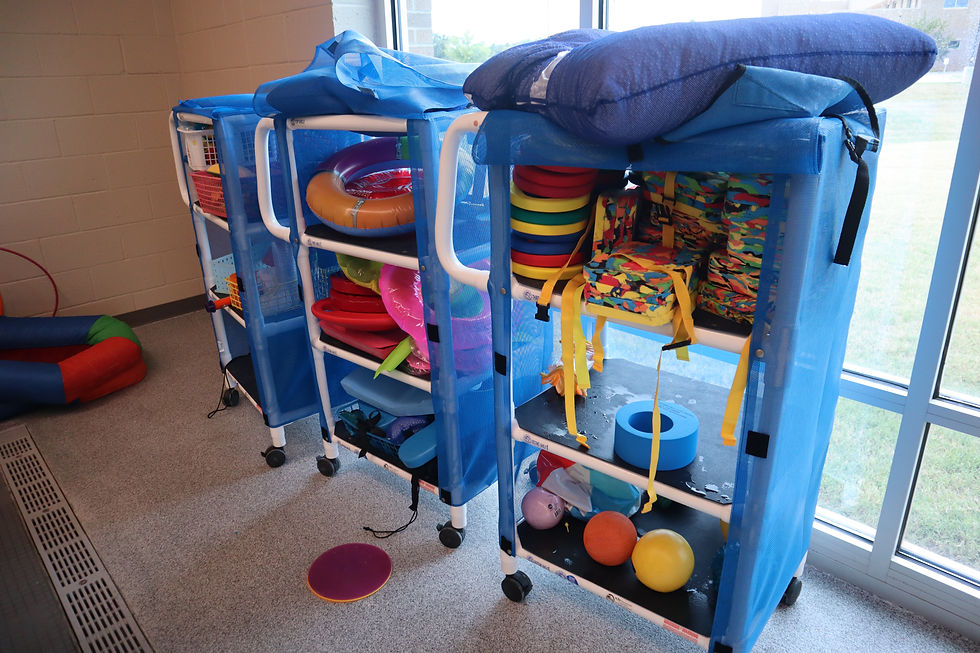




*move the mouse over the photos to see the slideshow*
Total Health pool equipment is designed for special needs children. In addition, Passmore comes up with do-it-yourself tools specifically planned for her students’ and patients’ needs.
Hard skills like reading and calculating are essential, but the most important life skills children get to bring home from the pool are soft skills. The first of these kinds of skills is learning natural consequences.
“If I tell you that you’re gonna sink if you don’t have your floaties on, and you won’t listen to me, you jump off the side anyway, you’re gonna go under,” Passmore said. “I’m gonna help you up, of course, but that’s a natural consequence.”
Another soft skill with a huge impact on the children’s lives is confidence. Passmore said although it’s sometimes harder for these kids to see success, here, they get realizations of being able to do things independently. Great power comes with great responsibility, however, too much confidence can be dangerous, especially in a deep pool.
“My biggest fear with our special needs kids is that we’re gonna give them enough confidence that they think they can do more than they can,” Passmore said.
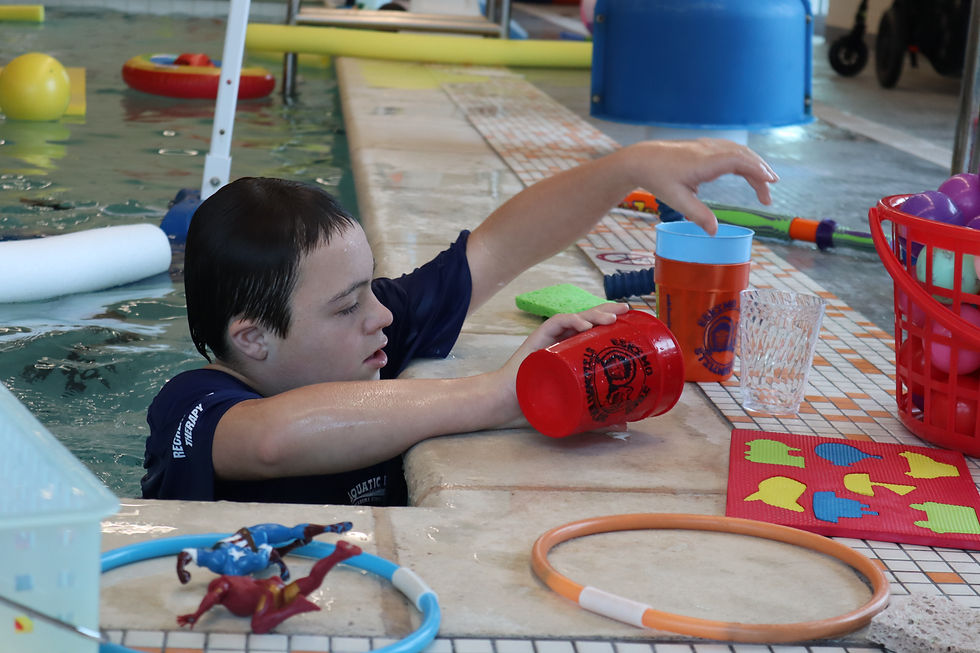
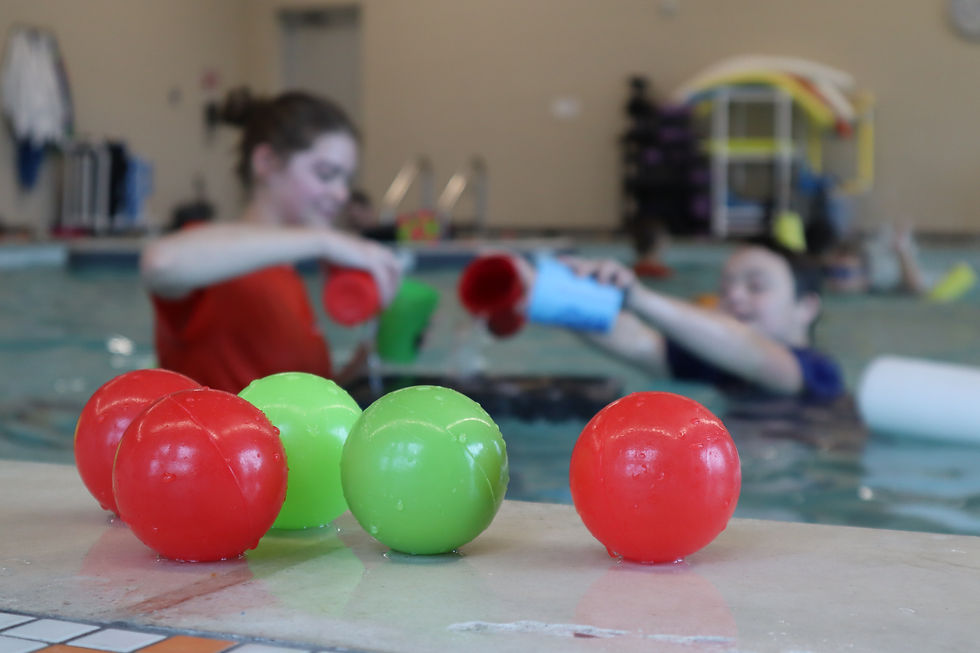
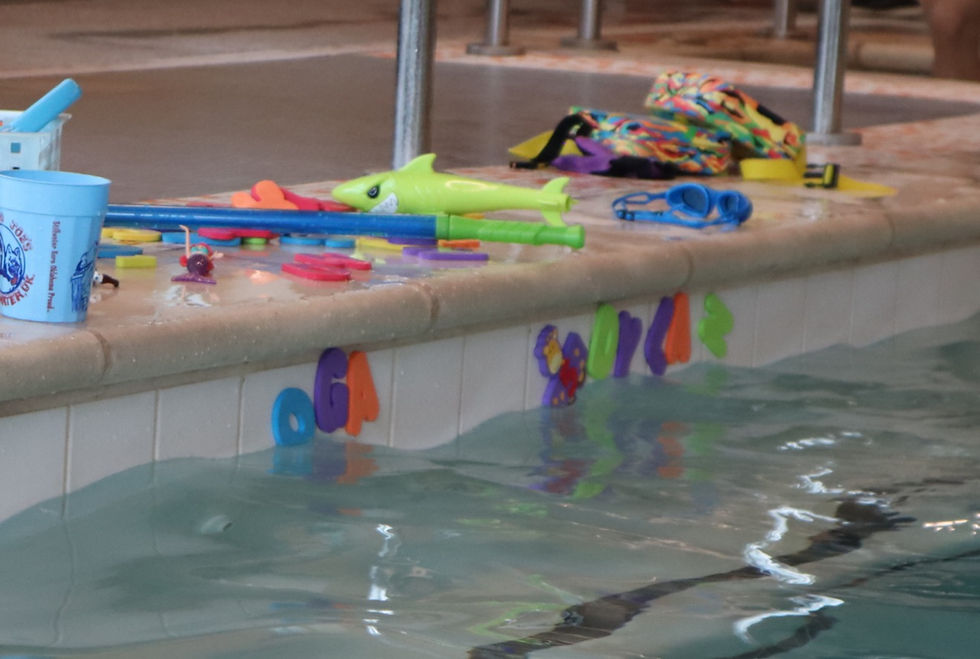
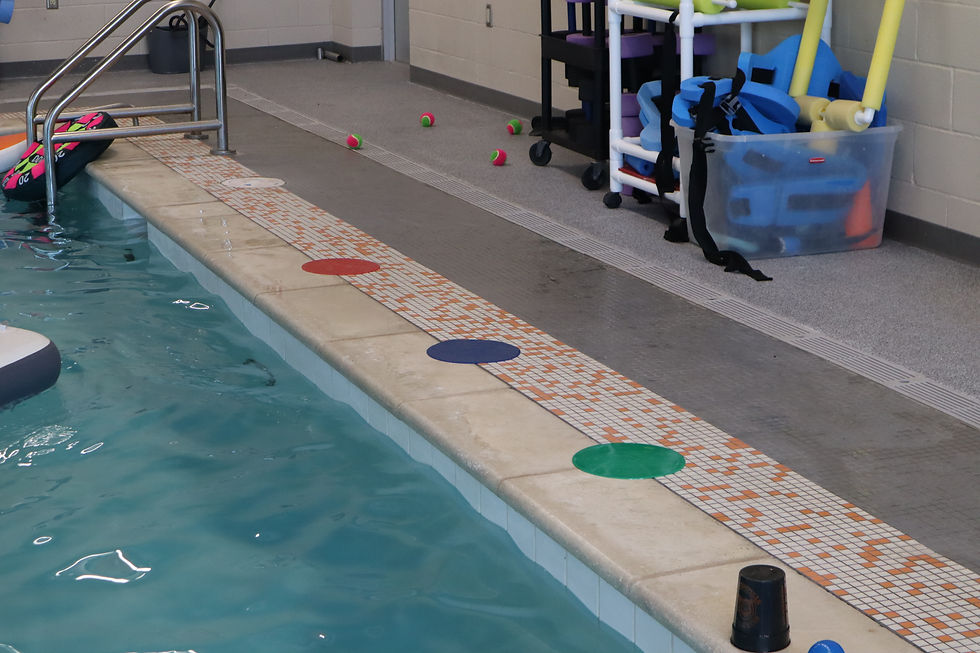

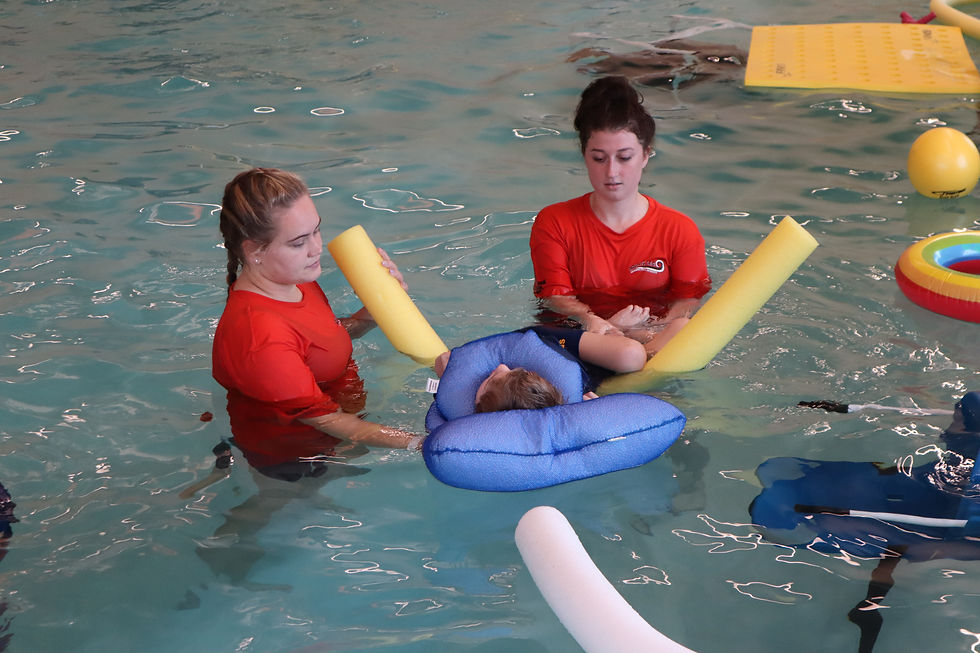






*move the mouse over the photos to see the slideshow*
Learning physical skills, colors, letters, sequencing…
Jayden Fiebiger, a senior at OSU, completed a warm water therapy lab only one semester before getting to utilize the skills in a real-life job. Her supervisor during a summer internship was aquatic therapy certified, so Fiebiger got to dive right into water therapy with the clients.
“Since I had that background, I was comfortable getting in the water with the clients and actually doing interventions and activities with them,” Fiebiger said.
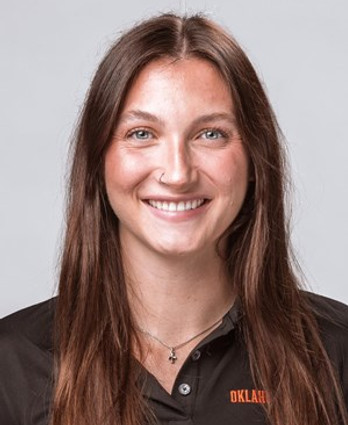
Jayden Fiebiger
(Photo Courtesy: OSU Athletics)
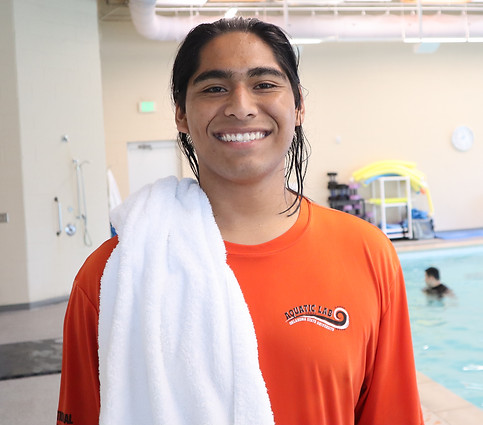
Samuel Arteaga
Samuel Arteaga, OSU senior, wants his life to be fulfilling. He came across recreational therapy as a freshman and it changed the course of his life. He switched his major from aviation to recreational therapy. Arteaga loved the memories and patients during his sophomore year lab with Passmore so much that he wanted to keep participating as a volunteer.
“My favorite memory was my last day of this class my sophomore year and the patient I was working with didn’t like going underwater … I felt bad for pushing him a little bit, but he did it and came back up just fine,” Arteaga said. “Being in that position with something we normally wouldn’t do with him was an awesome experience, especially for the last day.”
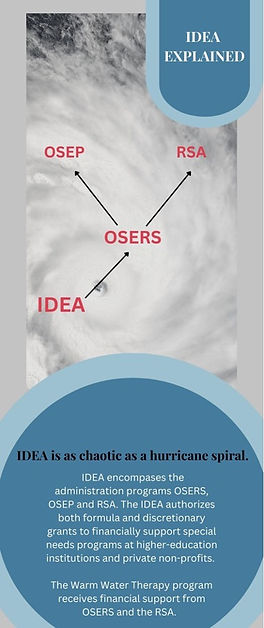
Warm water therapy is a part of Oklahoma’s system that is designed to support special education students. Unfortunately, it doesn’t always work the way it’s supposed to. Passmore mentions instances where children have struggled to get unexcused absences from classes to attend warm water therapy. A national law, the Individuals with Disabilities Education Act, ensures eligible children with disabilities receive free special education and related services.

School bus brings Stillwater special education students to warm water therapy as a part of the IDEA act’s funding
Special education programs like warm water therapy have the ability to change the lives of both OSU students and the children eligible for these free services. Passmore’s perspective over children with special needs is something she wants all her students to remember:
“We as a society tend to view them as failures because they can’t learn the way the majority of the people learn,” Passmore said. “My favorite quote is from Einstein: If you judge a fish by its ability to climb a tree, it will always be a failure.”